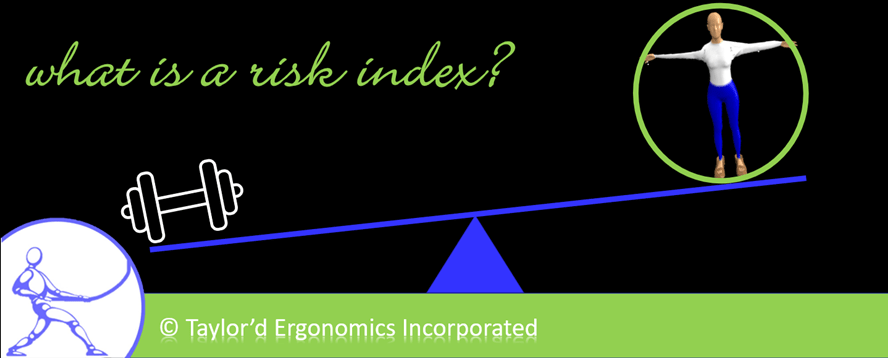We are often asked the question, “Is this job safe?” The client wants to know if workers are at a high risk of strain or sprain injury and, if so, what they could do to mitigate the risk. If the job is acceptable as it is, they likely want to prioritize resources elsewhere.
Some ergonomists are not prepared to answer this question; they will look at a job and identify hazards, and provide a list of recommendations, but they won’t tell you if these recommendations are “nice-to-do” or “need to do”. Many years ago, the engineers that we worked with told us they needed more information…what needs to be done to bring the demands to acceptable levels?
When you ask us that question, we feel compelled to root out the answer, which usually involves some technical expertise to calculate a “risk index”. A risk index is a score that we assign to a hazard, which is calculated based on the ratio of the observed demands to the recommended risk thresholds. If the risk index is greater than 1, the task warrants improvement.
Let’s take an example of a water spider job (the person who restocks materials to a line), which involves a lot of lifting. The average load weight is 7 kg, and the peak load weight is 18 kg. Based on handling frequency, object size, hand heights, reaches (and more), we might calculate a maximum acceptable load for the “average” demands (for this case study, let’s say it works out to 9 kg), and a maximum acceptable peak load (let’s say 12 kg). (In fact, the assessment might account separately for a variety of lifting conditions – reaches, heights, container sizes, etc..)
The risk index is the ratio of actual demands to recommended thresholds. Therefore, the risk index for the “average” demands would be 7 kg / 9 kg = 0.78. This means that, overall, the average load weights fall within guidelines.
However, the risk index for the “peak” demands would be 18 kg / 12 kg = 1.5. This means that the heavy loads are creating high risk, and a change should be made.
The ergonomist can then drill down to see what aspects of these loads create the problem – maybe the shelves are too high, or the box is too bulky, or the absence of handles doesn’t allow the water spider to grip the cartons. We can play “what if” until we come up with a solution that reduces the risk index to less than one.
Another nice thing about using a risk index is that it allows you to prioritize. Maybe you have identified 10 hazards, and you want to know which one to tackle first. A risk index will allow you to rank the hazards against each other. The risk index allows us to use different tools to analyze different tasks, so you don’t need to take the time to learn all the intricacies of each assessment tool. We can use a biomechanical model, a physiological model, or psychophysical charts, for various hazard assessments, and we can report the results as a risk index, regardless of the tool that we used. (Of course, we provide our results to you, and you’re welcome to an explanation if you’re interested! Not everyone in your organization will care about the technical details, but they should care about the risk index.)
So, if you need to know whether a job is acceptable, contact us:
carrie@taylordergo.com
Or get more info here.


